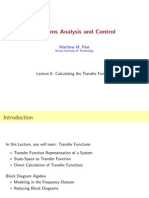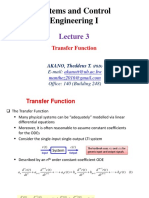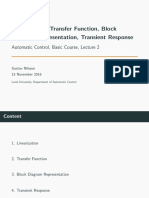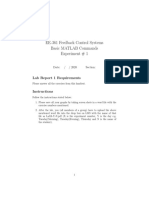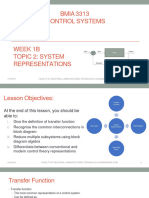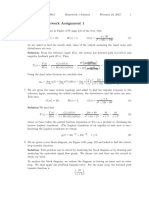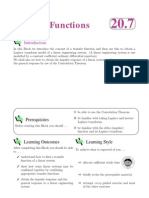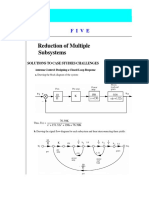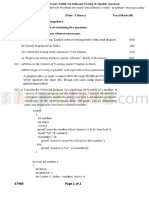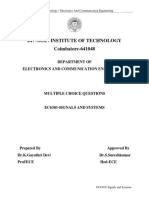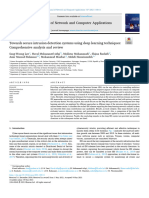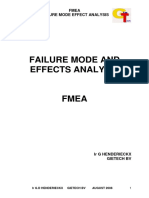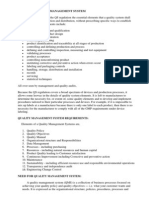0% found this document useful (0 votes)
342 views23 pagesTransfer Functions & Block Diagrams
The document discusses calculating transfer functions, which represent systems in the frequency domain and relate the output of a system to its input using Laplace transforms. It provides examples of deriving transfer functions from state-space models and using transfer functions to find the step and sinusoidal responses of systems. The document also derives the transfer function of an inverted pendulum system.
Uploaded by
Thafer MajeedCopyright
© © All Rights Reserved
We take content rights seriously. If you suspect this is your content, claim it here.
Available Formats
Download as PDF, TXT or read online on Scribd
0% found this document useful (0 votes)
342 views23 pagesTransfer Functions & Block Diagrams
The document discusses calculating transfer functions, which represent systems in the frequency domain and relate the output of a system to its input using Laplace transforms. It provides examples of deriving transfer functions from state-space models and using transfer functions to find the step and sinusoidal responses of systems. The document also derives the transfer function of an inverted pendulum system.
Uploaded by
Thafer MajeedCopyright
© © All Rights Reserved
We take content rights seriously. If you suspect this is your content, claim it here.
Available Formats
Download as PDF, TXT or read online on Scribd
/ 23
